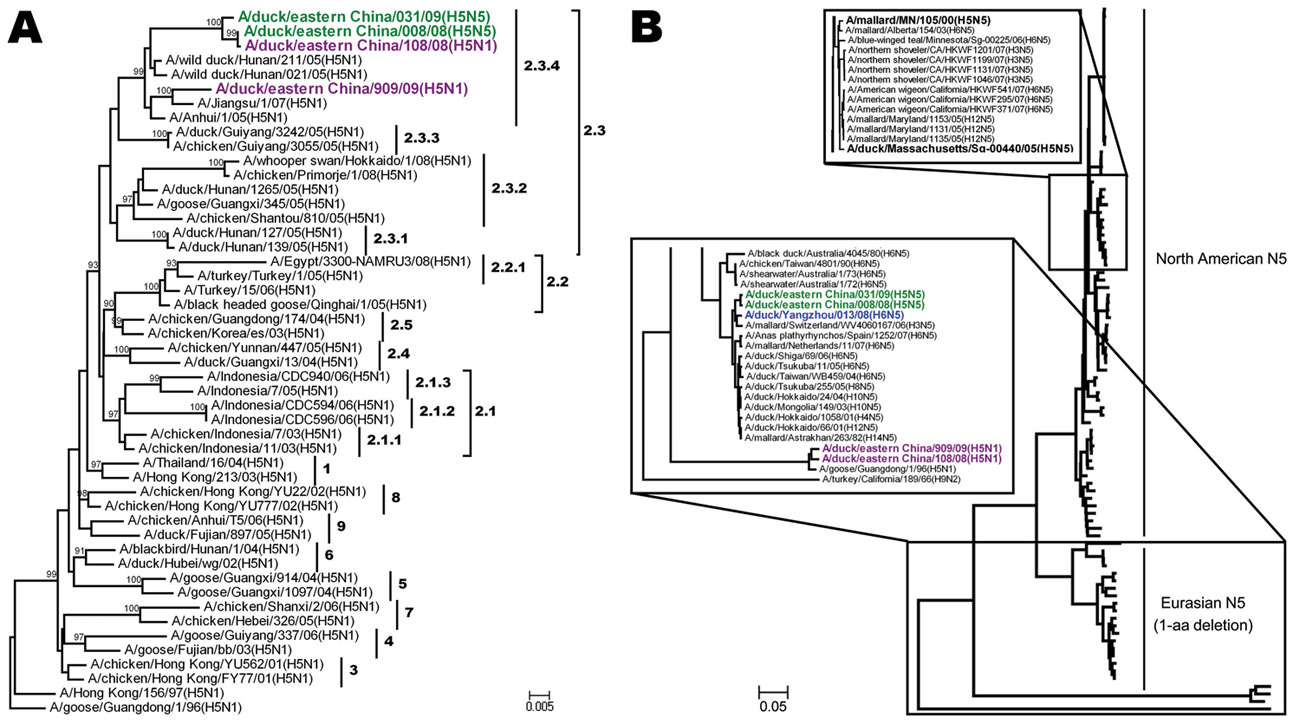Volume 17, Number 6—June 2011
Dispatch
Novel Reassortant Highly Pathogenic Avian Influenza (H5N5) Viruses in Domestic Ducks, China
Figure 1

Figure 1. Phylogenetic trees of hemagglutinin (A) and neuraminidase (B) genes of novel avian influenza (H5N5) viruses isolated from domestic ducks in the People’s Republic of China, December 2008–January 2009, with reference sequences. Green, A/duck/eastern China/008/2008 (H5N5) and A/duck/eastern China/031/2009 (H5N5); purple, A/duck/eastern China/108/2008 (H5N1) and A/duck/eastern China/909/2009 (H5N1); blue, A/duck/Yangzhou/013/2008 (H6N5); boldface, other H5N5 influenza viruses available from GenBank. Inset boxes in panel B indicate correspondence between thumbnail and panorama of related perspectives. Trees were generated by applying the neighbor-joining method in MEGA 4.0 (www.megasoftware.net) on the basis of full-length coding sequences. Numbers above or below the branch nodes indicate bootstrap values. Scale bars indicate branch length based on number of nucleotide substitutions per site.